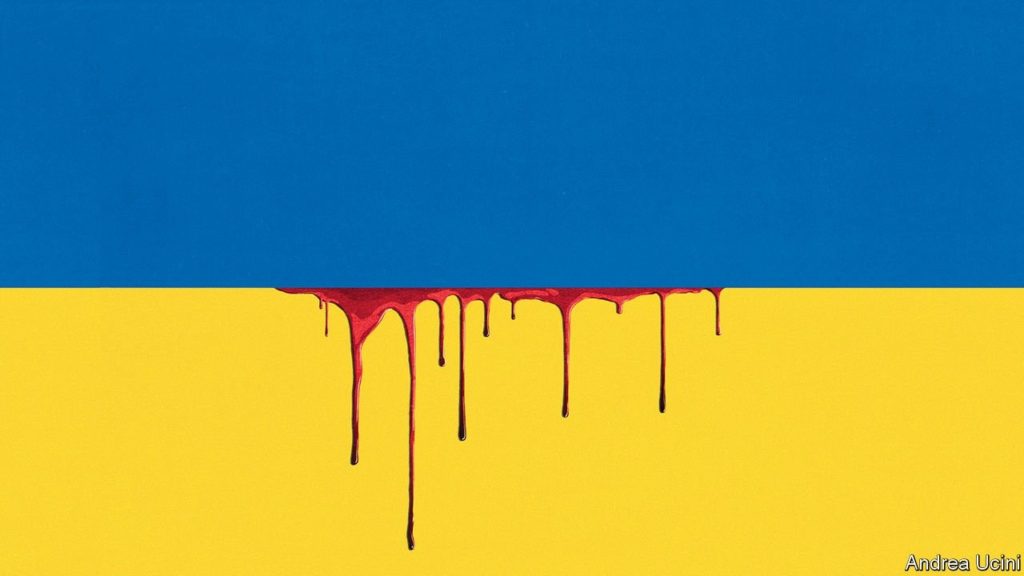Plus: the brave Ukrainian woman, Yana Zinkevich, whose story must also be shared
Plus: the grisly realities of the Russian onslaught as captured by war photographer James Nachtwey
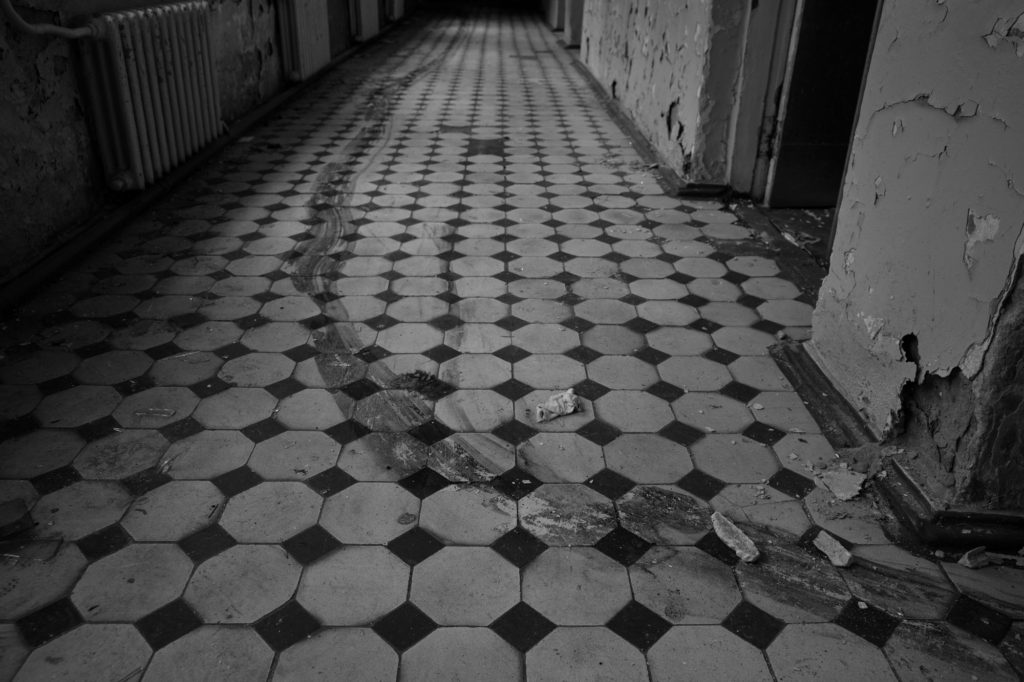
ABOVE: A streak of dried blood stained the length of a hospital hallway in Makariv, west of Kyiv. Amid the Russian onslaught, and the slaughter of 1000s of civilians, the building was converted into a morgue.
21 May 2022 – As most of my readers know, a few weeks before the Ukraine War started, I moved several members of my media team to Krakow, Poland and hired additional freelance Ukraine and Russian reporters and researchers, knowing the war was coming and that we needed to be closer to the front lines and have the proper resources to report on it. As I had been writing since the first of the year, we all knew what was to come.
It also allowed us closer contact with my long-standing OSINT (Open Source Intelligence) contacts who I have used many times throughout the last 8 years to produce other blog posts.
And in an element of brutal irony it was only a few days after we had completed filming at the Nazi death camp at Auschwitz and we had interviewed Holocaust survivors living in Krakow, to be used in my forthcoming movie on genocide.
All of this Ukraine work has led to meeting 1000s of people and it has generated 1000s of stories. The following are just 3 of those stories.
Yuliia Paievska
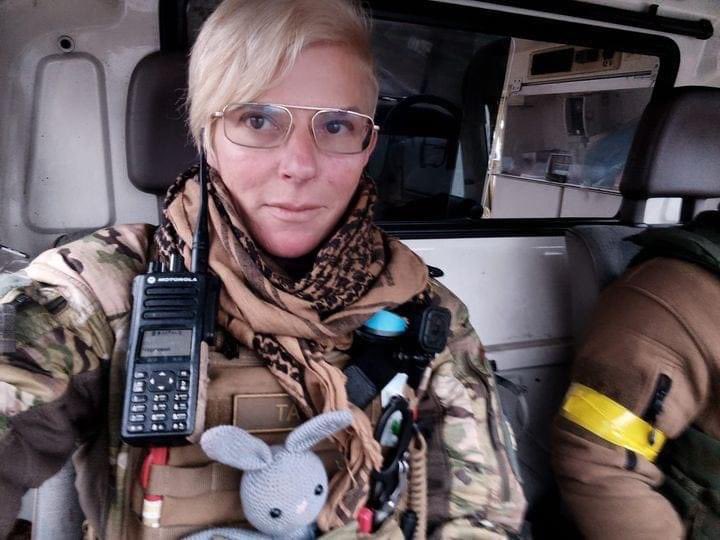
Yuliia Paievska is a Ukrainian medic who became a nationwide folk hero known as “Taira” when the invasion began . She was able to pass along hours of body-cam footage to The Associated Press, the data card smuggled past several Russian checkpoints in a tampon. It was only days later that Yuliia, one of the instant legends forged by Vladimir Putin’s invasion of Ukraine, disappeared. She resurfaced in Russian custody, where she’s believed to be today, though her location is unknown.
But that harrowing footage is out for the world to see.
Yuliia had been given a high-quality body-worn camera to film a Netflix documentary on “The Invictus Games”, an international sporting event for wounded vets. But she turned it on when the invasion started, and just kept filming.
“Taira” had made a name for herself early in the war by treating anyone who needed it – even Russian soldiers. Her footage, released yesterday by the AP, shows multiple scenes where she de-escalates her Ukrainian comrades’ aggression against them, and tells onlookers that she’s duty-bound to treat “prisoners of war” the same as anyone.
Besides jumping in to help triage victims of all stripes, “Taira” was known for training the volunteer medical corps called the “Angels of Taira” that staffed de facto field hospitals in the besieged city.
Not all of her efforts were successful. There are some very highly intense scenes of death and injury in the following video, so watch with extreme discretion:
Yana Zinkevich
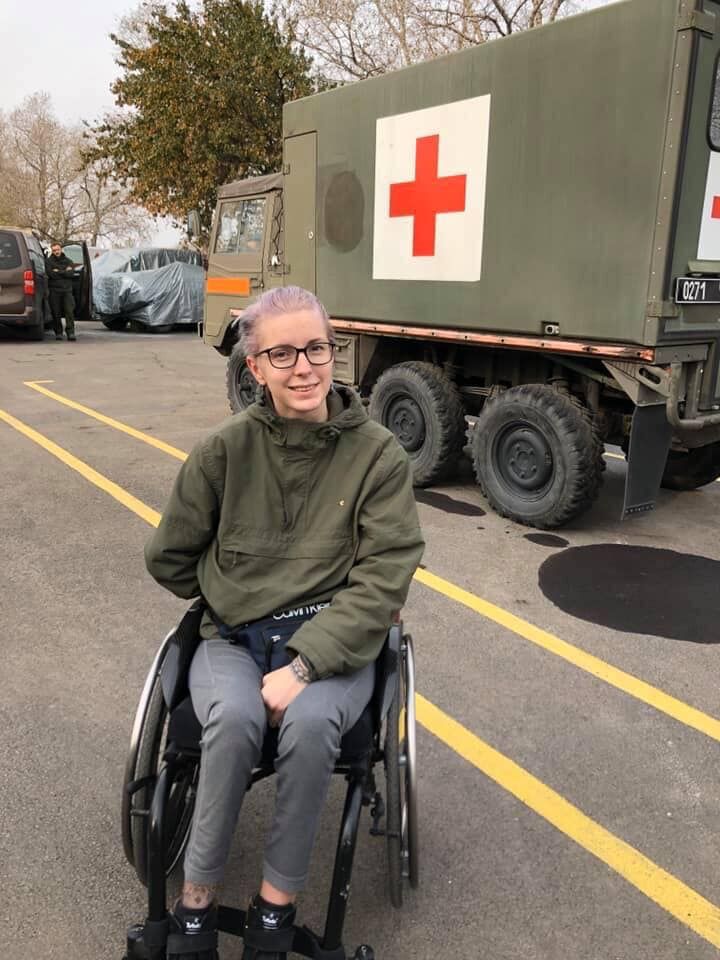
In 2014 when Russia annexed Crimea and launched war in Donetsk and Luhansk regions of Ukraine, Yana Zinkevich decided for herself that she couldn’t stay distant and joined one of volunteer battalions. She went to the front line as medical volunteer to help saving lives of Ukrainian soldiers. She was only 18. She is credited with personally helping more than 200 soldiers. She also founded the Hospitallers, a volunteer organization of paramedics.
In December 2015 while being in a car of the Hospitallers she got into a horrible car accident. As a result she was severely injured and since then she moves only in a wheelchair. But that didn’t stop her and she continued to devote her life to saving lives of others.
In 2019 she was elected to Verkhovna Rada (the Parliament of Ukraine) and without any surprise she has focused her activity there on health and medicine.
Since 2014 her Hospitallers have been saving lives – and they have kept on doing that during all 87 days after start of brutal Russian invasion. Members of the organization are volunteers who, at the risk of themselves, provide first aid on the contact line:
– They pull the wounded from the front line and transport them to hospitals.
– They help soldiers and civilians directly in the hottest areas.
– They help to those who need first aid, emergency medical intervention or therapeutic treatment.
– Besides all that Hospitallers have also taught tactical medicine to thousands of Ukrainian defenders.
Today Yana is only 26, but at her age she is already a war veteran, a deputy, a disabled person and a founder of an organization that saves lives of Ukrainians every day. Today Yana’s Hospitallers live in hell seeing blood and horror every day but they keep on doing their job, trying to save each life they can. These are the true heroes among us every day. If you wish, you can contribute to the Hospitallers by clicking here.
The grisly realities of the Russian onslaught
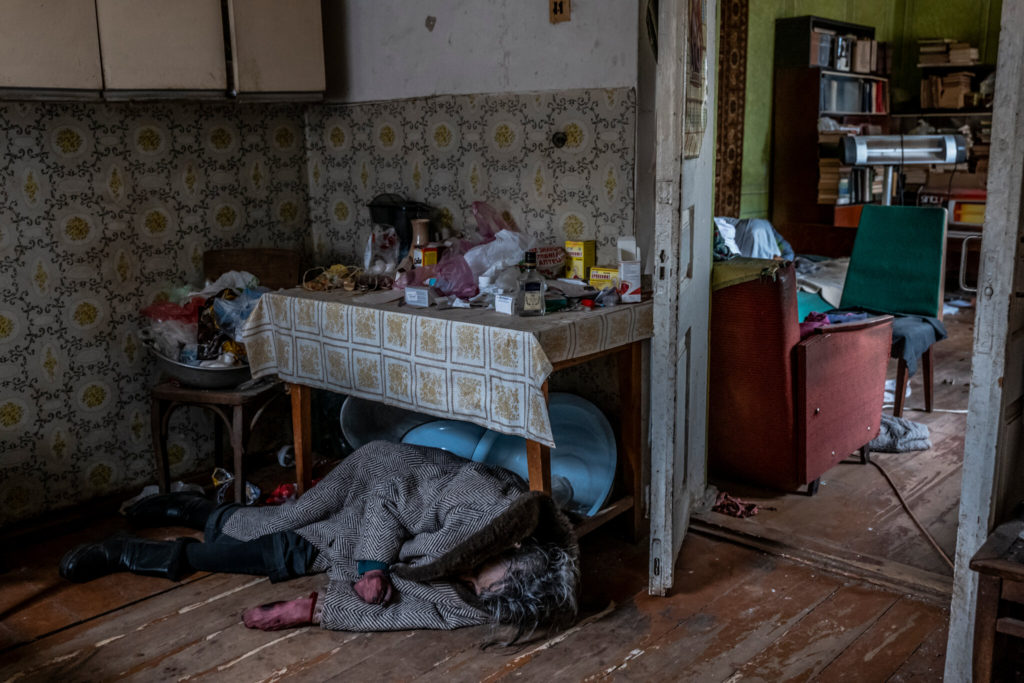
ABOVE: In early April, Nina was found dead in the kitchen of her home in Bucha, outside Kyiv, where she had lived with her sister Lyudmyla who has not been found. Hundreds of such bodies have been discovered in the district, many shot in the back and/or head.
The invasion of Ukraine has been described as the first social-media war, and a key aspect of President Volodymyr Zelensky’s leadership has been his ability to rally his country, and much of the world, via Facebook, Telegram, TikTok, and Twitter.
At the same time, war photographers in Bucha, Irpin, and beyond are working – in the tradition of Mathew Brady at Antietam or Robert Capa on Omaha Beach – to capture the grisly realities of the Russian onslaught.
James Nachtwey, now seventy-four, is among those keeping their eyes trained on the realities (one of his photos leads this post, and the photo immediately above of Nina). Influenced by the photography that emerged from the civil-rights movement and Vietnam, he began his career at the Boston bureau of Time and then took a job at the Albuquerque Journal. When he read about the hunger strike in Northern Ireland, in 1981, he headed for Belfast. Four decades of covering conflict ensued, bringing him to El Salvador, Afghanistan, Iraq, the Balkans, Rwanda, Chechnya, and many other places. Nachtwey was present during the September 11, 2001 attacks on the World Trade Center and he produced a well known related body of work and compiled a stunning photo essay.
I have not met him but a member of my Ukraine team did. But I knew of Nachtwey’s work when I was involved in the former Yugoslavia war crimes investigations and I saw many of his Bosnia war crimes photos:
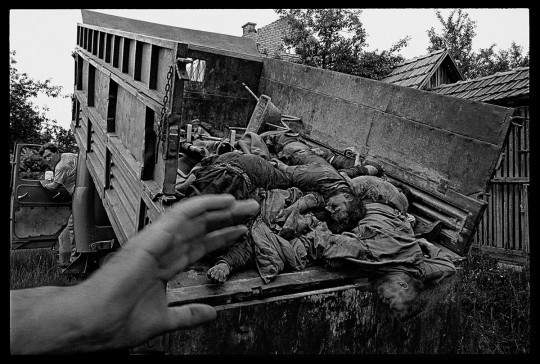
He has been injured in the field, lost colleagues and friends; his hair was once parted by a bullet. Nachtwey calls himself an “antiwar photographer”. He has bravely travelled across Ukraine and his war photos have appeared in New Yorker magazine, Time magazine and scores of web sites and other publications. The following are just a few:
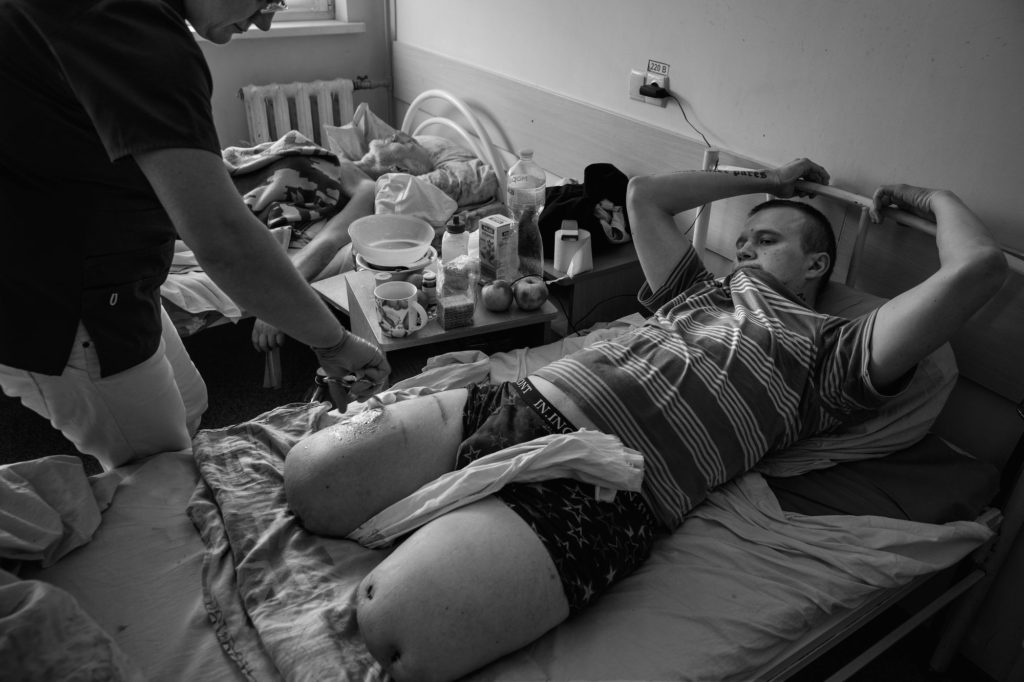

ABOVE: I have written about the staggering civilian body count in Bucha, where investigators work painstakingly to identify the dead, highlighting the brutality of the Russian military as it tried and failed to take Kyiv, torturing and executing civilians.
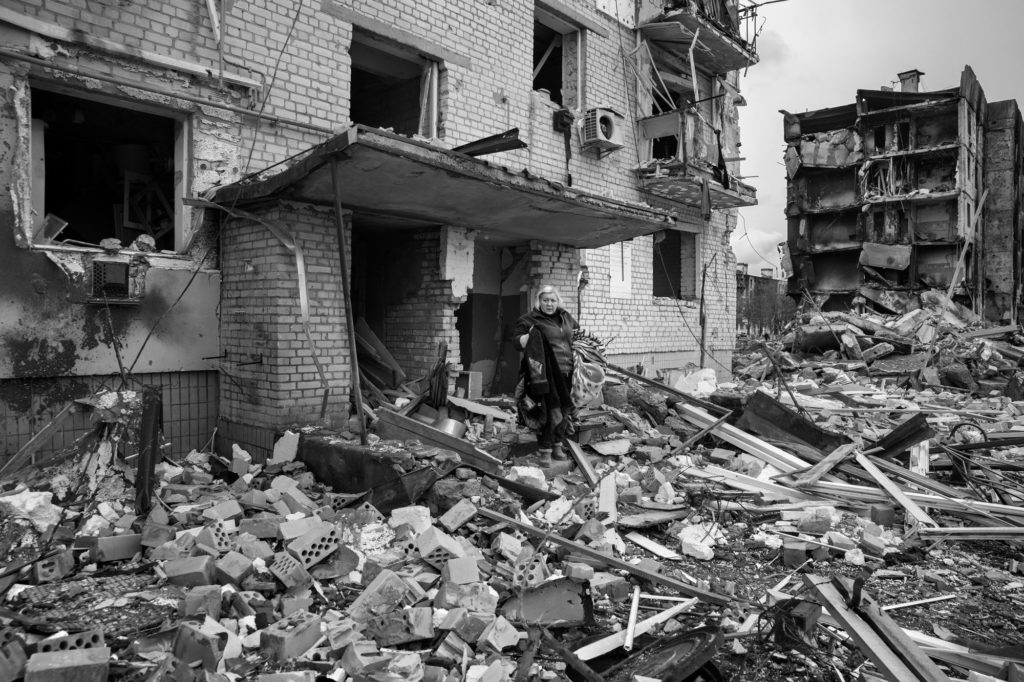
ABOVE: After Russian forces withdrew from Borodyanka, west of Kyiv, a woman retrieved belongings from a bombed-out apartment building there. Many locals returned to their homes after the occupation to sift through the wreckage. Not one residential building remained untouched, 85% totally destroyed.
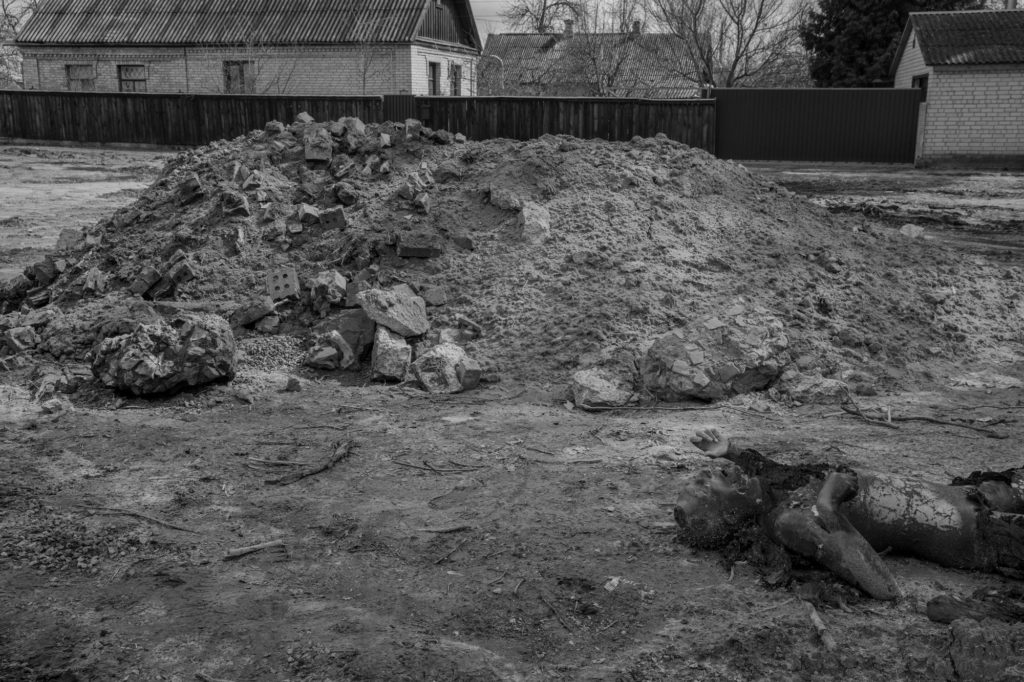
ABOVE : A corpse lying near a pile of debris in Bucha – one of scores of corpses that were brought by Russians, piled on tanks, dumped, and then set on fire.
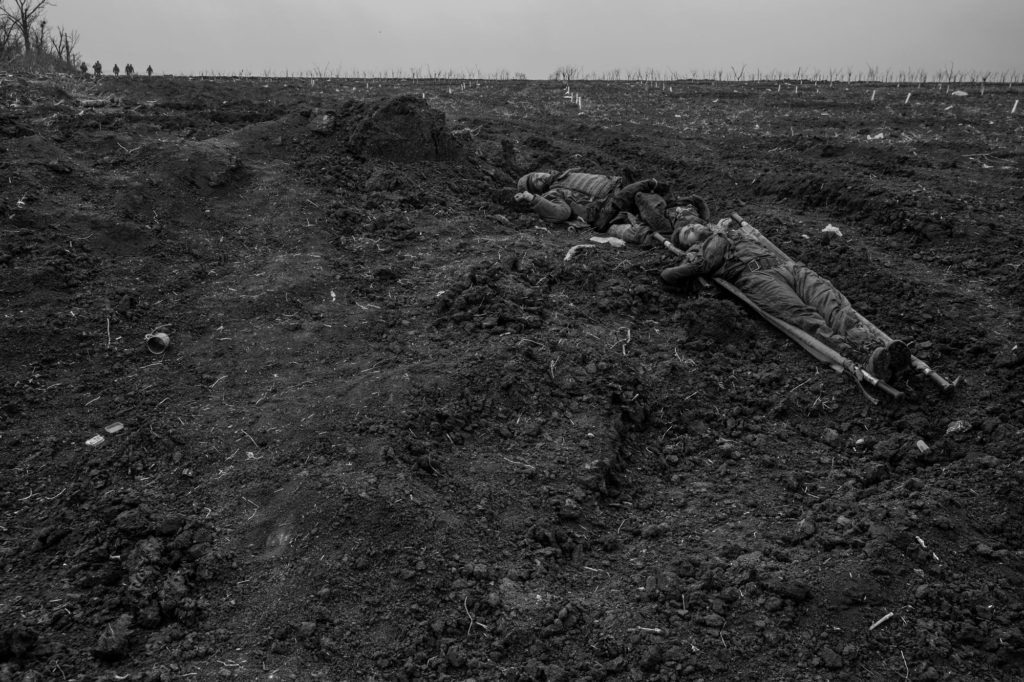
ABOVE: The bodies of two Russian soldiers who died in battle near the village of Mala Rohan, east of Kharkiv. Ukrainian and U.S. intelligence services estimate that Russia has lost some 20,000 troops. There are 1000s of Russian soldiers’ bodies in storage units across Ukraine. The Russia government refuses to accept them because it would mean having to admit to large losses, and to face Russian families.
The Ukrainian intelligence services are using Clearview facial recognition software to identify dead Russian soldiers and contacting Russian families directly to tell them what is going on. I’ll detail that next week in a special post.
* * * * * * * * * * * * *
In my study of mass violence and genocide and crimes against humanities, I have encountered many approaches in the study of these types of atrocities. But you always start with meaning. For the Russians, this useless violence is meant to destroy civilians en masse, to make them suffer, humiliate them, to even mutilate them before killing them.
The mass rape, execution and mutilation of women, the general depravity and dehuminization in Ukraine, is all instrumental violence directed at achieving a specific goal: the destruction of the Ukraine people, Ukraine culture, Ukraine civilisation. There is a long history of Russian destruction of Ukrainians. This war is merely one in 4 previous episodes.
I am working on a long briefing note to explain that history that which should publish within the next few weeks.
